
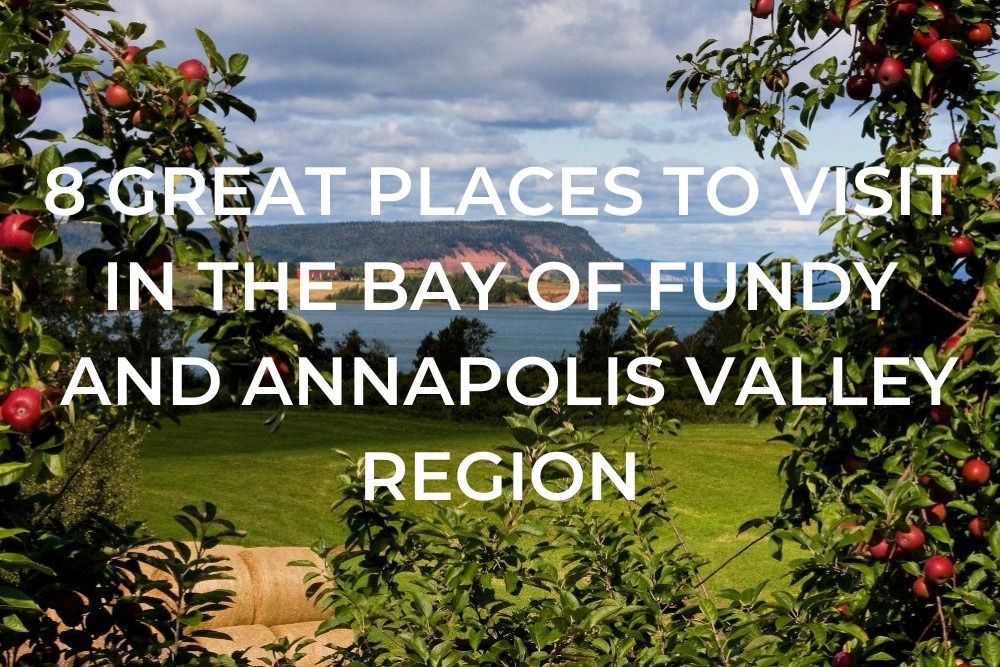
From Digby and the Annapolis Basin in the west to Windsor and the Minas Basin in the east visitors will find the Bay of Fundy and Annapolis Valley region. The North Mountain shelters the valley from the Bay of Fundy, and the South Mountain from the harsh Atlantic Ocean which has produced a microclimate that provides relatively mild temperatures and wonderfully fertile soil for the region’s well-known orchards and vineyards – all just waiting to be discovered.
History lovers can start with the Habitation of Port-Royal or Fort Anne in the charming town of Annapolis Royal and then stop in one of the several museums along the valley until they reach Grand Pré.
Food and wine lovers can savour all the flavours the region has to offer from hand-picked strawberries, raspberries, or blueberries at one of the family-run U-pick farms or take a wine tour complete with tastings at one of the vineyards now popping up in the Wolfville/Grand Pré area.
Nature and animal lovers will find plenty to keep them busy too. From whale watching in the Bay of Fundy to canoeing and back-country camping at Kejimkujik National Park – the region is a nature lover’s paradise.
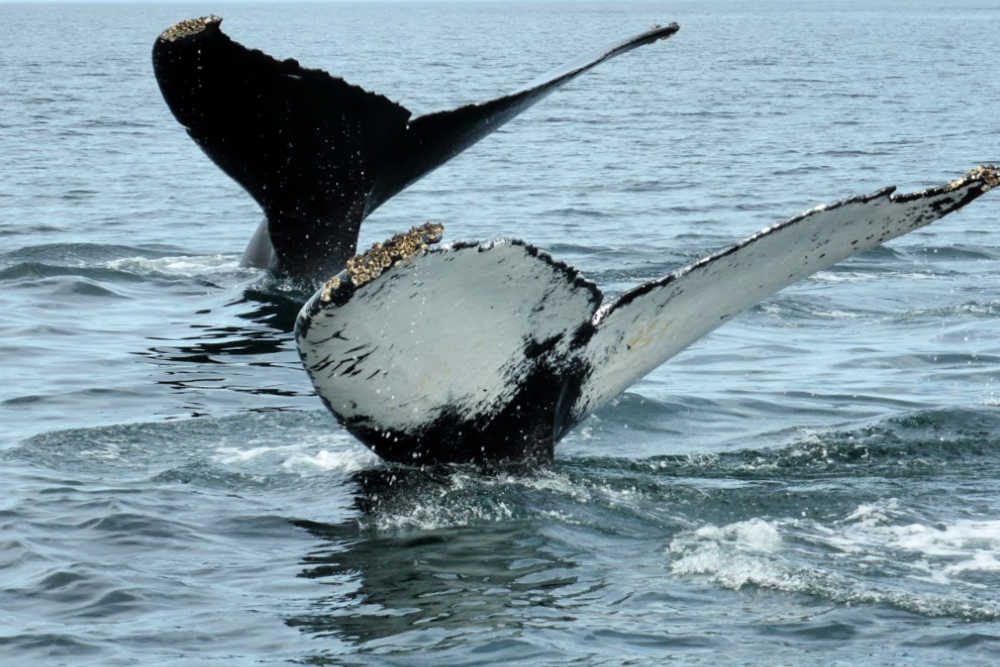
This post may contain affiliate links. Please read our full disclosure policy here.
Visitors to the region, whether from out of the country, other parts of Canada, or other areas of the province will be welcomed by an array of activities and sights to see from exploring charming historic towns and villages, hiking dramatic coastal cliffs, or watching beautiful sunsets and the changing of the tides in little harbour communities.
Whether you’re visiting for a weekend, a week, or longer, here are eight great places to visit in the Bay of Fundy and Annapolis Valley area to experience the best this region of Nova Scotia has to offer.
ANNAPOLIS ROYAL
Set in a delightful location on the Annapolis Basin, the town of Annapolis Royal is a wonderful place to visit. There is a boardwalk made for strolling or stop to rest on the benches and picnic tables, with a view of the town’s little lighthouse or the pretty village across the water. The main street is lined with trees and gracious mansions – the largest concentration of heritage buildings in Nova Scotia.
Annapolis Royal is definitely not known for its nightlife, but rather its history and ambience with historical sites that date back 400 years. In the town and nearby surrounding area, there are 150 registered historic buildings, three national historic sites, and Canada’s oldest building.
This pretty little town has won many awards for its achievements including being designated the “World’s Most Liveable Small Community” in 2004 and in 2005 it was listed as one of five Cultural Capitals of Canada.
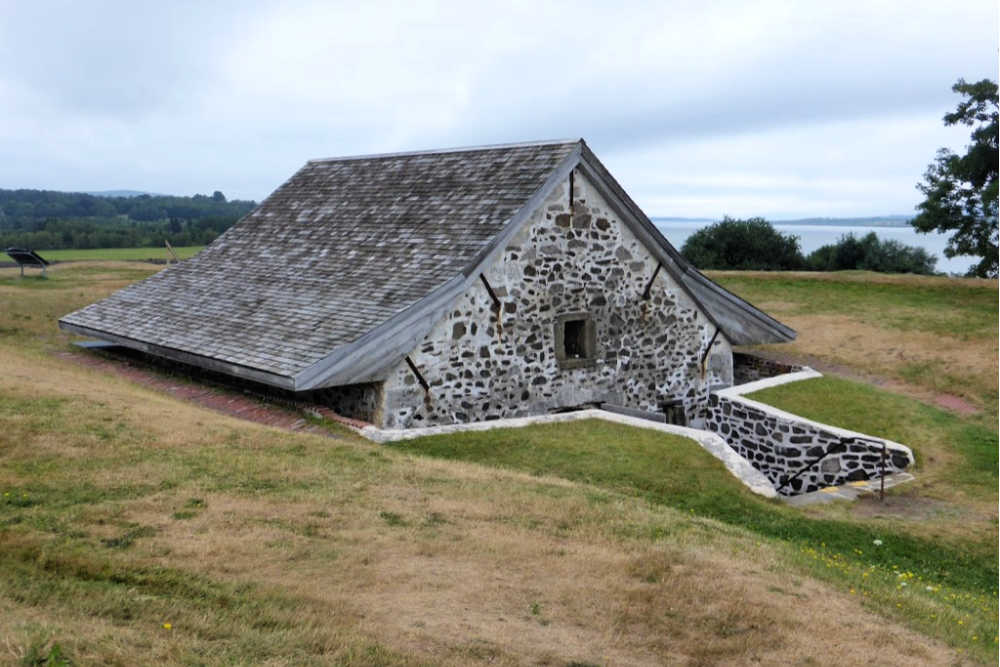
MUST DO IN ANNAPOLIS ROYAL:
- Stroll through the Annapolis Royal Historic Gardens: Set over four hectares, these gardens were designed to reflect the various periods of local history through a gardening perspective. Highlights include the Victorian Garden, Governor’s Garden, a rose garden with 270 cultivars, and a replica of a 1670s Acadian house with a thatched roof and traditional Acadian garden.
- Fort Anne National Historic Site: Considered a key stronghold for Nova Scotia/Acadie (depending on if you were British or French), Fort Anne is a lovely place to learn about the early history of this area. The site features officers’ quarters (c1797) built by the British which now houses a museum about the fort and the Acadians in the area. Of particular note is the Heritage Tapestry which depicts 400 years of history and settlement in the area. The grounds also include a French gunpowder magazine (c1708), grassy ramparts, parade grounds, and cannons!
- Candlelight Graveyard Tour: This tour started in 1991 and has consistently been one of the most popular events in Nova Scotia since! Visitors will examine the gravestones of the oldest English graveyard in Canada by candlelight while learning about the lives and customs of the people who shaped Fort Anne and the region. No reservations are required, just wear comfy shoes and be ready to enjoy a unique experience.
Reviews of Royal Historic Garden | Reviews of Fort Anne | Reviews of Graveyard Tour
TRURO
Because of its location at the convergence of the province’s main highways, on two bus (coach) routes and one of the few cities still served by Via Rail, Truro has been nicknamed “The Hub of Nova Scotia”. It is the third-largest population centre in the province, and even then that’s only a little over 22,000 people (as of the 2016 census).
While not as charming as some of the other towns on this list, Truro’s central location makes it a great base from which to make day trips in Nova Scotia or go on to the neighbouring provinces of New Brunswick and Prince Edward Island.
Truro is also a great spot to see the unique Tidal Bore phenomenon. The original Mi’kmaq inhabitants named the town Cobequid meaning “the end of the water’s flow” or “place of rushing water” – a sure sign the tidal bore is not a new thing!
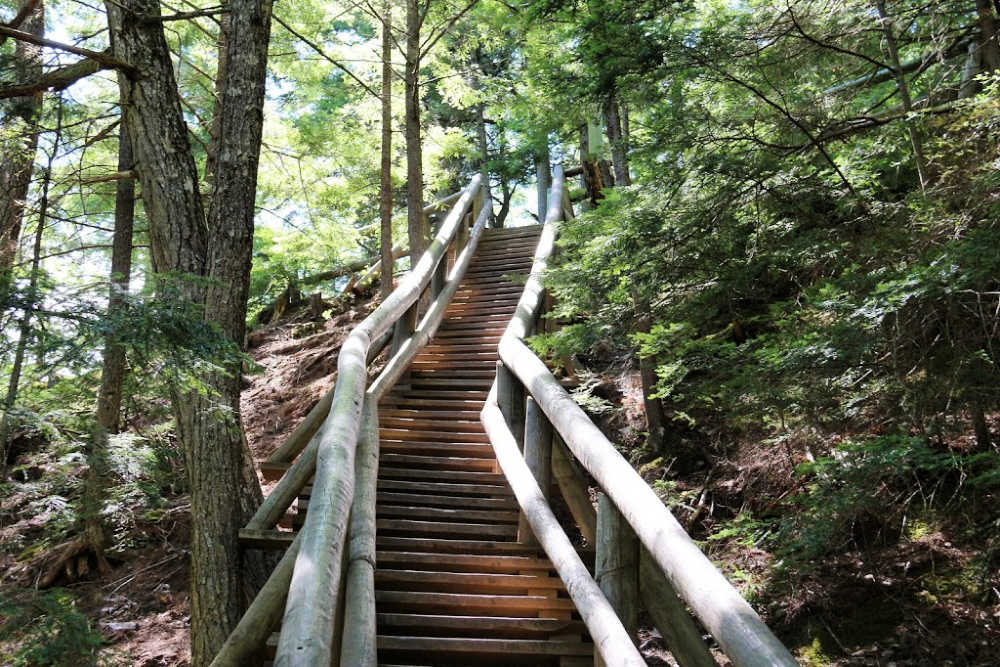
Photo Credit: Kelly Mercer / CC BY 2.0
MUST DO IN TRURO:
- Victoria Park: Considered as one of the most beautiful natural parks in Eastern Canada, Victoria Park is spread over 160 hectares and offers an unusually wide variety of geographical features and forests of red and white spruce, ancient hemlock, and white pine. One of its trails takes hikers along a deep Triassic gorge that features two waterfalls and a climb of 175 steps up the side of the gorge on “Jacob’s Ladder”. Another trail offers a view of the area and the Cobequid Basin from the look-out on the trail at the top of Wood Street.
- View the Tidal Bore: This cool phenomenon only occurs in a few places in the world and one of the most accessible is on the Salmon River that flows through Truro at the head of the Cobequid Bay. When the incoming tide from the Bay of Fundy meets the Salmon River it forces it the wrong way in a rush and fills the riverbed. You can view this for free from the observation deck either day or night (as there are floodlights set up). Be sure to check the tide schedule and then arrive a little early as nature doesn’t always follow schedules to the minute!
- Colchester Historeum: After exploring nature in Truro, take a visit to the Colchester Historeum to learn a little history. Housed in a c1900 brick building in a quiet residential area, visitors will see exhibits on Fundy eccentricities and the area’s heritage and natural history. The bookshop also has a good selection of books on Truro and the surrounding province.
Reviews of Victoria Park | Reviews of Tidal Bore Observation Deck | Reviews of Colchester Historeum
GRAND PRÉ
A small town that feels like the pastoral fringe of Wolfville, Grand Pré is the epicentre of one of the most tragic events in Canadian history – the deportation of the Acadians.
The first settlers were an Acadian family who came from nearby Port Royal in 1680 and the area grew into the largest Acadian settlement in Nova Scotia. They built dykes along the shoreline which created fertile farmlands for their families. This fertile region is now well known for the many wineries that have opened in the area bringing visitors from around the province and from further afield.
A visit to this little community will enhance your appreciation for the area and its Acadian heritage. The pastoral landscapes, the dyked lands, and the sense of serenity all make it a welcome stop on a visit to Nova Scotia.
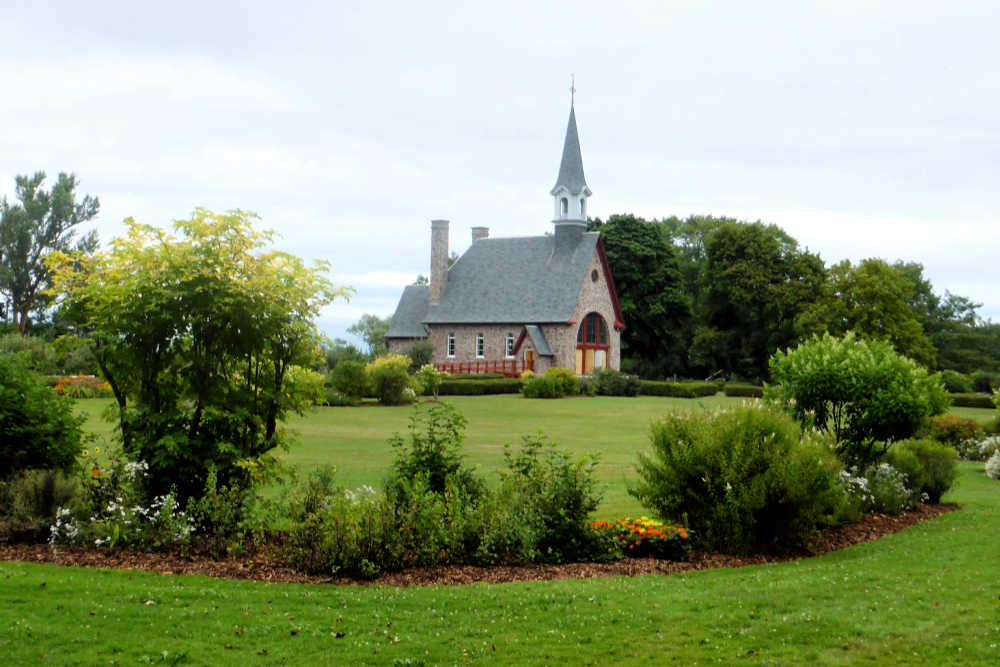
MUST DO IN GRAND PRÉ:
- Grand Pré National Historic Site: Added to the UNESCO World Heritage list in 2012, this site commemorates the expulsion of the Acadians by the British in 1755. The modern interpretive centre explains the historical context of the deportation from Acadian, Mi’kmaw and British perspectives. In addition to a church, there are vegetable and flower gardens, a blacksmith shop, and an orchard that all look out over the dyked farmland to be explored.
- Tangled Garden: Created over the past 30 years this lovely spot is a wonderful place to visit, slow down, and literally smell the flowers. There are paths of clover, walls of flowers, ornamental grasses, perennial flowers, herbs, and more to enjoy. This is also a great place to pick up a little flavour of the region to remember your visit – perhaps a homemade chutney, vinegar, or jelly made with herbs and fruit.
- Domaine de Grand Pré Winery: Originally from Switzerland, the owners of this winery have transformed it into a beautiful place to visit. With award-winning vintages, great Fundy views, and vineyard tours and tastings you could easily come for an hour or stay longer to linger over the 10-acre property. Enjoy a glass of Nova Scotia’s signature Tidal Bay wine under the pergola, or stay for dinner and dine in their restaurant.
Reviews of Grand Pré National Historic Site | Reviews of Tangled Garden | Reviews of Domaine de Grand Pré Winery
BLOMIDON & CAPE SPLIT
The Blomidon Peninsula is at the northern end of the North Mountain and extends into the Minas Channel with Cape Split at its very end and the Minas Basin at its back. It is definitely a great spot to take in Fundy scenery!
The Blomidon area has great spiritual significance for the Mi’kmaq as it is the home to Glooscap the demi-god that they believe had great size and power and created natural features such as the Annapolis Valley. It’s for him that the Glooscap scenic highway trail was named.
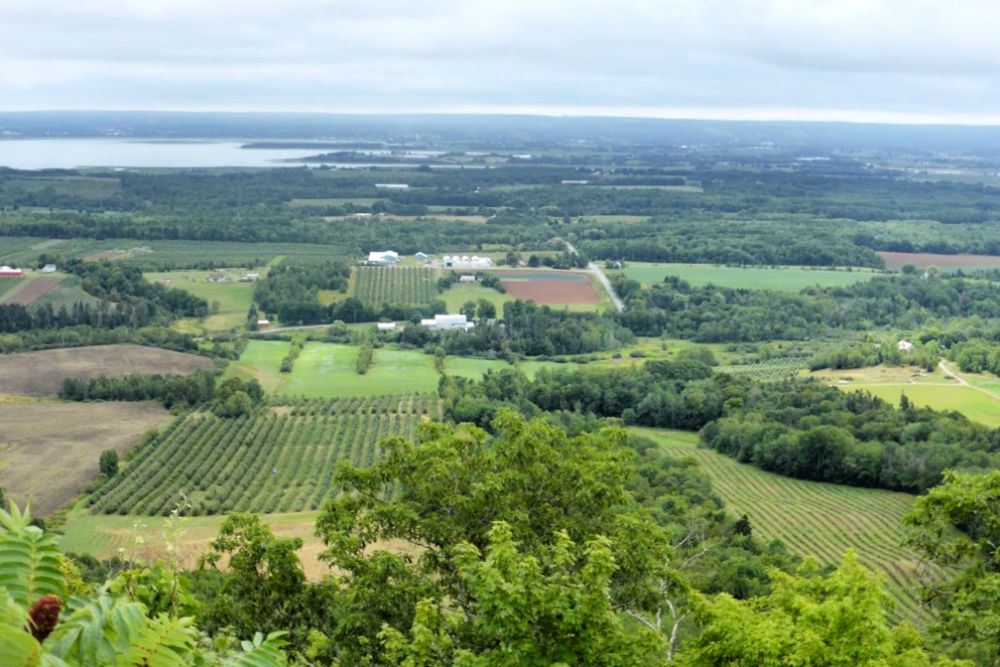
MUST DO IN BLOMIDON & CAPE SPLIT:
- The Look-Off: This small roadside stop is worth a little sidetrack for the beautiful panoramic view of the Annapolis Valley. On a clear day, you can see five counties, but even on a cloudy day, you can still get a nice view across the fields. Bird enthusiasts should keep an eye out for bald eagles and hawks soaring through the sky. To find this little spot, look for the Look-Off Family Campground on Hwy 358 and the viewpoint is right across the road.
- Blomidon Provincial Park: This park is loved by hikers and those looking for great views with its high sea cliffs and beautiful red shale and sandstone. The Fundy tides recede twice daily so you can stroll along the red-sand beach and search for stones like amethyst and agate, along with pretty shells and sea creatures. There are also several hiking trails two of which are the Look-Off Trail which is an easy 1 km walk to a lookout high atop the cliffs and the Borden Brook Trail that winds through a white spruce forest to a series of waterfalls.
- Cape Split: With an 8 km hike each way, the walk out to the cape can be a long walk for inexperienced hikers but it’s doable and worth the effort, just give yourself enough time to make the round trip based on your pace. There are two trails to choose from. The first is the coastal trail which is more difficult and is close to cliff tops so it’s not for those that don’t like heights. The other is the easier going trail through a mixed forest. As you near the cape the trees end and give way to a grassy area with the sea on three sides for fantastic views (especially if there isn’t any fog!) and an ideal picnic spot. Do be very careful near the cliff edges as they are constantly eroding and can give way at any time.
Reviews of The Look-Off | Review of Blomidon Provincial Park | Reviews of Cape Split
NOEL SHORE
The Noel Shore and coast drive along Route 215 leads to the Bay of Fundy’s ultimate tidal experiences where visitors can walk (and dine!) on the ocean floor or feel an adrenaline rush as they ride the tidal bore.
History buffs will enjoy a visit to the village of Maitland which is Nova Scotia’s first Heritage Conservation District and home of the country’s oldest general store! Or they can learn about the area’s shipbuilding past with a visit to the Lawrence House Museum.
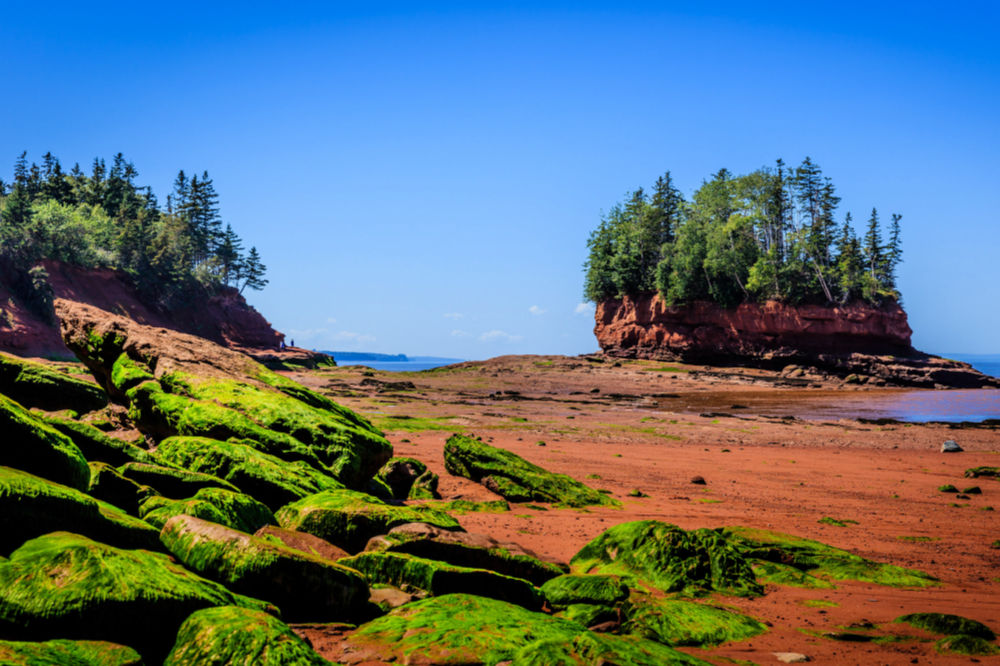
Photo Credit: Shawn Kent / CC BY 2.0
MUST DO IN NOEL SHORE:
- Burntcoat Head Park: With the highest tides on earth recorded here, visitors can walk on the ocean floor at low tide and then only six hours later that same ground could be almost 17 metres below the surface of the water! There is a short walking trail that leads to the beach where you walk amongst the flower-pot sandstone formations topped with trees and peek into tidepools to see what critters await the incoming tide. You can also visit a replica of the 1913 lighthouse which is now an interpretive centre and offers panoramic views from the top.
- Lawrence House Museum: Overlooking the Cobequid Bay, this museum shares the area’s shipbuilding past and the story of William D. Lawrence all in his former homestead. He built the largest wooden-hulled fully-rigged ship ever built in Canada and the 1874 launching of his ship is commemorated each year in September with a parade of period-dressed locals, a symbolic launch, and a seafood supper. What fun if you are able to visit at this time of year!
- Tidal River Rafting: When the incoming Fundy tide temporarily reverses the river’s flow, a tidal bore is created that travels upriver and makes for a series of wild rapids for an adrenaline-fueled (and wet!) ride. One of the best places to do this is on the Shubenacadie River with some companies also giving you time to get out and slip and slide in all that mud! Messy? Of course! But what fun eh?
Reviews of Burntcoat Head Park | Reviews of Lawrence House Museum | Reviews of Tidal River Rafting
LONG ISLAND & BRIER ISLAND
To reach these islands does require a bit of time and effort, but for those looking to watch the swirling sea, the pounding waves on the rocks, and just to breathe the fresh sea air, it is worthwhile to make this trip.
Begin your explorations on Long Island with a stop in the traditional fishing village of Tiverton and a lunch of fresh fish and chips. From there just enjoy the islands surrounded by water rich in plankton which attracts a variety of whales, dolphins, seals and seabirds. You won’t want to leave your binoculars at home when out exploring this area!
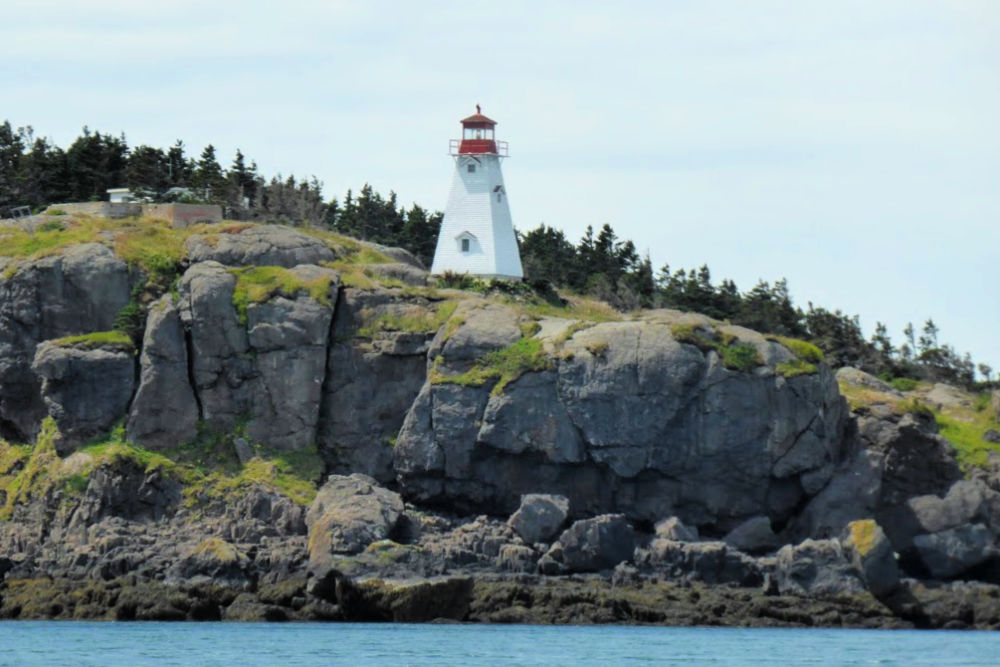
MUST DO IN LONG ISLAND & BRIER ISLAND:
- Whale Watching: Hands down the most popular activity for this region and with good reason – the whales are amazing! There are several whale watching companies in the area which offer different options for boats to choose from depending on how close you want to be to the water. Some boats hold about 30-40 people which may seem like a lot but we really enjoyed our time on a boat like this with Petit Passage Whale Watching and didn’t feel like it was too many people. You can also opt for the Zodiac options which are much zippier, get closer to the whales, but can also be quite damp and chilly depending on the day. It definitely pays to do a little research into the options to keep everyone in your group comfortable as you’ll be out for hours on a whale watching tour. TIP: Use burst mode on your camera to get the best photos so you can catch the whales as they make their
dives (that’s how we got the photo of the whale tails at the beginning of this post). - Balancing Rock: Located on Long Island, this 9 m tall column of basalt is balanced on a seemingly far too narrow base, yet there it still stands after all this time. The trail is about 800 m until it gets to a boardwalk over the water for a view of the Balancing Rock. There is another trail about 5 km away at the picnic area that is a 1 km hike through a forest of moss, ferns and roots until you reach the shore which looks almost lunar with dark rock marbled with streaks of quartz.
- Grand Passage Lighthouse: Just one of the lighthouses on Brier Island, the Grand Passage Lighthouse makes a great place to stop to walk its coastal trail, especially for birdwatchers in the autumn to see the migration of hawks, particular songbirds and seabirds. Also nearby is Seal Cove which at low tide you’re likely to see seals sunning themselves on the rocks. The first lighthouse was built on this spot in 1901 which was good as this area sees lots of foggy days and there have been 57 shipwrecks in this area. The current lighthouse replaced the original in 1968. For more lighthouses click for a complete list of Nova Scotia’s lighthouses.
Reviews of Petit Passage Whale Watching | Reviews of Ocean Explorations Whale Watching | Reviews of Balancing Rock
PARRSBORO SHORE
The part of Nova Scotia along the Parrsboro Shore is often overlooked by visitors yet is rich in history (REALLY old history) and dramatic landscapes.
The force of the sea provides us with a view of the ancient world along the coastline of the Chinecto Bay and Minas Basin. This area is where Canada’s oldest dinosaurs once roamed and archaeological digs have yielded over 100,000 fossilized bone fragments of these dinosaurs and crocodiles, lizards, sharks and primitive fish.
Fossil hunters and rock hounds will definitely want to check out this region of the province!
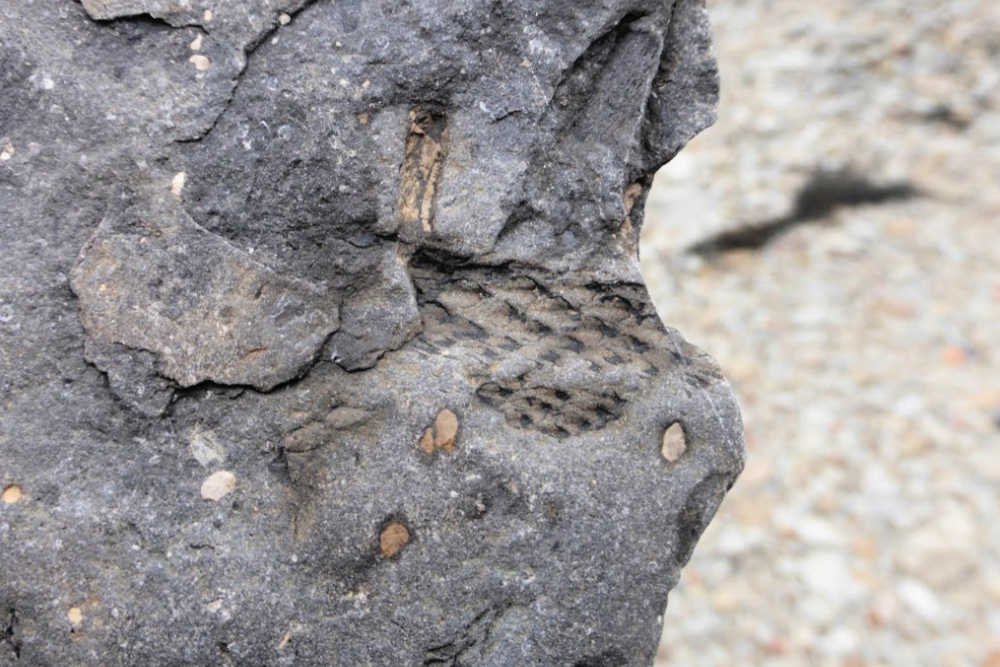
MUST DO ON THE PARRSBORO SHORE:
- Joggins Fossil Cliffs: Built on top of a 250-year-old coal mine, the fossil centre now shares an introduction to the world’s most complete record of the coal age from 300 million years ago! About 15 km of the 30 m high cliffs have eroded to reveal about 200 different fossilized specimens from this era when the region was steamy swamps and forests. The site was inscribed on the UNESCO World Heritage list in 2008 and visitors can take guided tours along the beach and visit the museum which has a great collection of fossils and artefacts to learn about geological and archaeological history.
- Fundy Ocean Research Centre for Energy (FORCE): The Parrsboro area is the most significant place on earth for harnessing tidal energy and you can learn all about that research here. Visits are free to the state-of-the-art facility that harnesses not only tidal energy but finds ways to use energy wisely with features that provide solar heat in winter and solar shading to help with cooling in the summer.
- Fundy Geological Museum: This museum shares the rich 350-million year history of fossils, stones, and dinosaur bones with its exhibits and guided beach tours that have been exposed from the tides eroding the bedrock. It also holds the collection of Eldon George, a local man, who spend 60 years collecting fossils around the world. With a working geology lab and interactive exhibits, this makes a great stop with the kids.
Reviews of Joggins Fossil Cliffs | Reviews of Fundy Geological Museum | Reviews of Fundy Ocean Research Centre for Energy (FORCE)
KEJIMKUJIK NATIONAL PARK
Founded in 1968, the park was shaped during the last glacial epoch and is now made up of 380 sq km of drumlins, lakes dotted with islands, and hardwood and coniferous forests, Kejimkujik (or ‘Keji’ as it’s known to locals) is the place to go for nature and to just ‘get away from it all’ in the province.
This national park is also an important refuge for native animals and wildlife enthusiasts love it for the bird watching. There are about 200 species of birds here including the barred owl, pileated woodpecker, and the loon which graces our $1 coin (called a “loonie”). Other animals that may be seen, especially if you get out to the backcountry, are bears, deer, porcupines, and beavers. In the summer the lakes are warm enough for swimming and fishing for perch and brook trout is enjoyed by many.
The park was designated as Nova Scotia’s first Dark Sky Preserve in 2010 by the Royal Astronomical Society of Canada and there are programs at the park about the ecological and cultural importance of night skies. If star-gazing sounds appealing, this is a great place to do it!
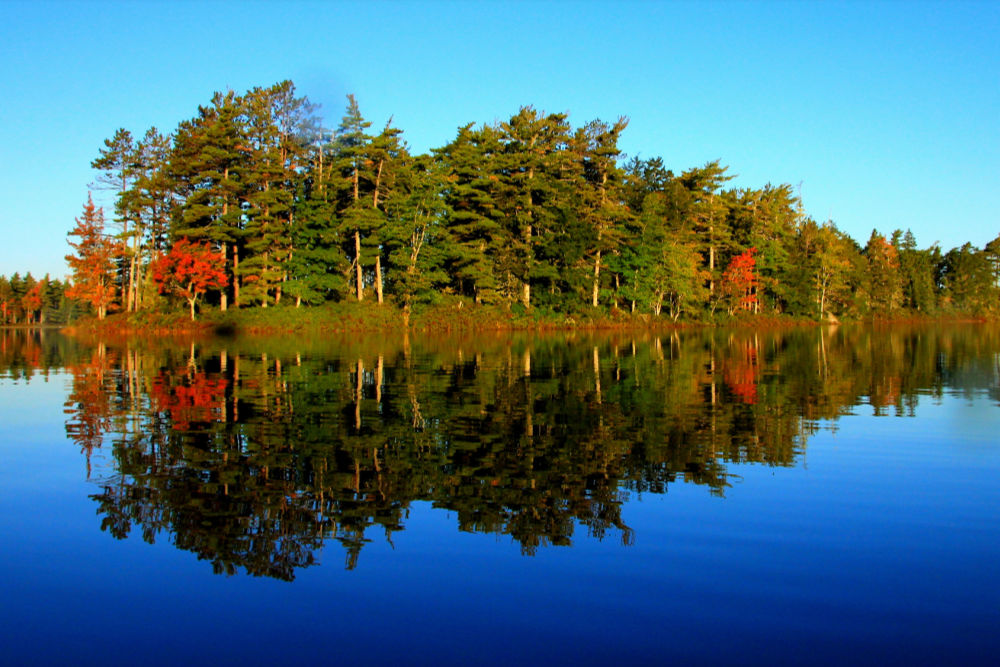
Photo Credit: Wallace Howe / CC BY-SA 2.0
MUST DO IN KEJIMKUJIK NATIONAL PARK:
- Canoeing and Kayaking: Made up of about 20% water, the park is a favourite with canoers and kayakers. If you don’t have your own equipment or you’re a beginner, that’s OK too. You can rent canoes and rowboats by the hour or day and the Mersey River that runs through the park is calm and suitable for beginner paddlers. In some cases, canoeing is actually the best way to get around the park, especially to some of the backcountry camping sites.
- Hiking: Hikers will be spoiled for choice with the network of trails, some of which lead to the backcountry campsites, at the park. In the winter these trails do double duty when cross-country skiers join those out hiking. A couple of the popular trails are the Beech Grove Trail which is a 2km loop along the Mersey River with a stop at the top of a drumlin with a beech grove on top, or the Rogers Brook Trail which is an easy 1 km trail for beginners through a forest of red maple and hemlock trees.
- Camping: As mentioned some of the sites are only accessible by canoe so if you want a quiet getaway one of these woodland sites might be just what you are looking for. They include toilets, tables, grills, firewood, and serenity. Other campers might enjoy Jeremy’s Bay Campground with a little more action. It has 360 sites (some with power hook-ups), washrooms, showers, firepits, and a playground to keep the kiddos active.
RESOURCES | PLAN YOUR TRIP TO NOVA SCOTIA
- Fodor’s Travel: Nova Scotia & Atlantic Canada
- Frommer’s Easy Guide to Prince Edward Island, Nova Scotia, and New Brunswick
- Moon Atlantic Canada: Nova Scotia, New Brunswick, Prince Edward Island, Newfoundland & Labrador
- Lonely Planet: Nova Scotia, New Brunswick and Prince Edward Island
- Nova Scotia Book of Everything
- Bradt: Nova Scotia – This book is the most comprehensive and what I consider to be the very best Nova Scotia guidebook.
Some of the links in the post above are affiliate links. This means if you click on the link and purchase the item, we will receive an affiliate commission but this does not affect the price to you. Please read our full disclosure policy here.





